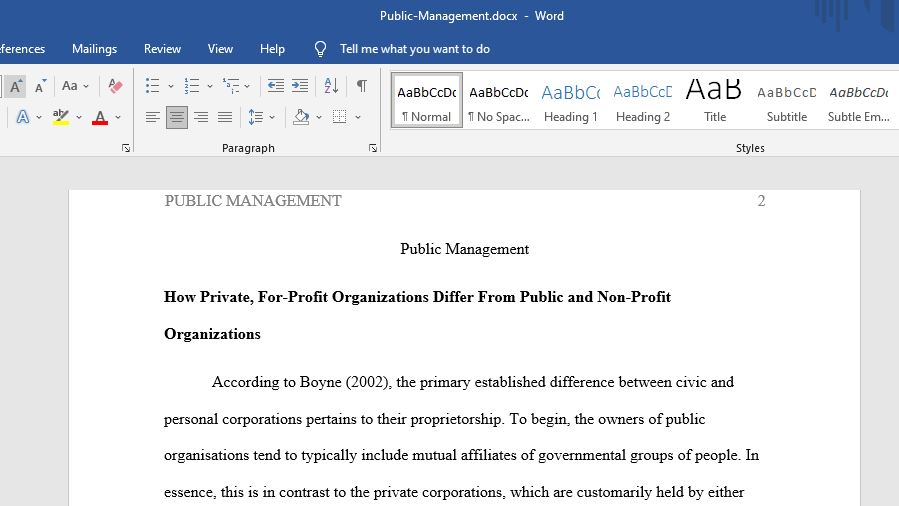Public Management
The new realities of globalization and increased accountability are forcing public and nonprofit organizations to reconsider their use of traditional management practices. Instead, organizations are opting for results-oriented management practices typically associated with private, for-profit organizations. Over the past few decades, several major public management reform initiatives were created to address the demand for increased accountability.
For this Discussion, review this week’s Learning Resources. Think about how public and nonprofit organizations differ from private, for-profit organizations (e.g., environment, goals). Consider potential challenges associated with implementing private, for-profit management practices in the reform of public and nonprofit organizations. Then reflect on the applicability of private, for-profit management practices to public and nonprofit organizations.
The assignment 1-2 pages must include:
- a brief description of how private, for-profit organizations differ from public and nonprofit organizations.
- describe at least one challenge associated with implementing private, for-profit management practices in the reform of public and nonprofit organizations and provide a specific example.
- explain the private management practice you feel is the most applicable to public and nonprofit organizations and why.
Be sure to support your postings and responses with specific references to the Learning Resources and other current scholarly literatureand cite properly in APA!
Resources:
- Cohen, S., Eimicke, W., & Heikkila, T. (2013). The effective public manager: Achieving success in government organizations (5th ed.). San Francisco, CA: Jossey-Bass.
- Chapter 1, “The Perpetual Crisis in Public Management” (pp. 1–18)
- Review Chapter 2, “Defining Effective Public Management” (pp. 19–46)
- Andersen, J. A. (2010). Public versus private managers: How public and private managers differ in leadership behavior. Public Administration Review, 70(1), 131–141.
Retrieved from the Walden Library databases. - Boyne, G. A. (2002). Public and private management: What’s the difference? Journal of Management Studies, 39(1), 97–122.
Public and Private Management: What’s the Difference? by Boyne, G. A., in Journal of Management Studies, Vol. 39/Issue 1. Copyright 2002 by Blackwell Publishing. Reprinted by permission of Blackwell Publishing via the Copyright Clearance Center. - Dunn, W. N., & Miller, D. Y. (2007). A critique of the new public management and the neo-Weberian state: Advancing a critical theory of administrative reform. Public Organization Review, 7(4), 345–358.
Retrieved from the Walden Library databases. - Osborne, D. T. (1993). Reinventing government. Leadership Abstracts, 6(1), 2–3.
Retrieved from the Walden Library databases. - Osborne, S. P. (2006). The new public governance?1 Public Management Review, 8(3), 377–387.
Retrieved from the Walden Library databases. - Winchell, Sr., T. E. (2013). The limitations of applying private-sector models to federal operations. Public Manager, 42(3), 65–67.
Retrieved from the Walden Library databases. - Laureate Education (Producer). (2014). Public management reform and reinventing government [Video file]. Retrieved from https://class.waldenu.edu
Answer preview:

Word: 700
